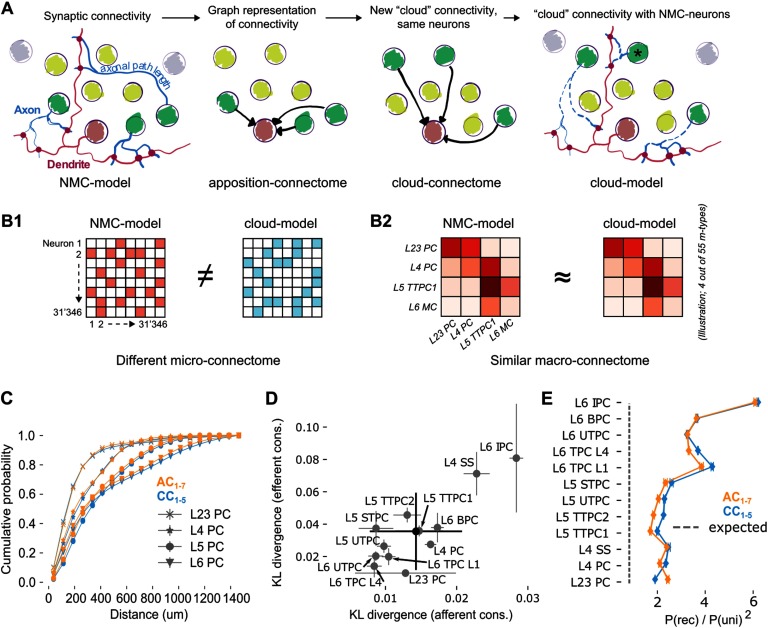Figure 2. .
Rewiring synaptic connectivity in a neocortical microcircuit model preserves macroconnectivity trends. (A) Left: In the NMC-model, synaptic connections from a given morphological type (m-type; neurons in light/dark green) are based on axo-dendritic appositions. Synaptic delays are calculated from axonal path lengths. Center left: The apposition connectome for the m-type can be represented as a directed graph that excludes neurons from other m-types. Center right: A new, cloud-based connectome is calculated for the same neuron population. Right: The cloud-based connectome is implemented by rewiring existing synapses, preserving their dendritic locations and physiological parameters. The process also preserves their original synaptic delay even for neurons at a different distance than the original neuron (black asterisk). (B) The NMC- and cloud-models have a completely different microconnectome in terms of connections between individual neurons (B1) but a very similar macroconnectome in terms of number of connections between the 55 different m-types in the model (B2). (C) Soma-to-soma distance for connected neurons pairs where the postsynaptic neuron is in the indicated layer (distance of afferent connections) for AC1–7 (orange) and CC1–5 (blue). (D) Kullback-Leibler divergence of afferent and efferent connection distances between AC1 and CC1–5. Gray circles and error bars indicate mean and standard deviation over instances for all excitatory m-types. Black: overall mean and standard deviation over five instances. (E) Reciprocal overexpression in terms of reciprocal connection probability divided by the square of the unidirectional connection probabilities for all excitatory m-types. Orange: AC1–7, blue: CC1–5. Indicated are mean and standard deviation.

